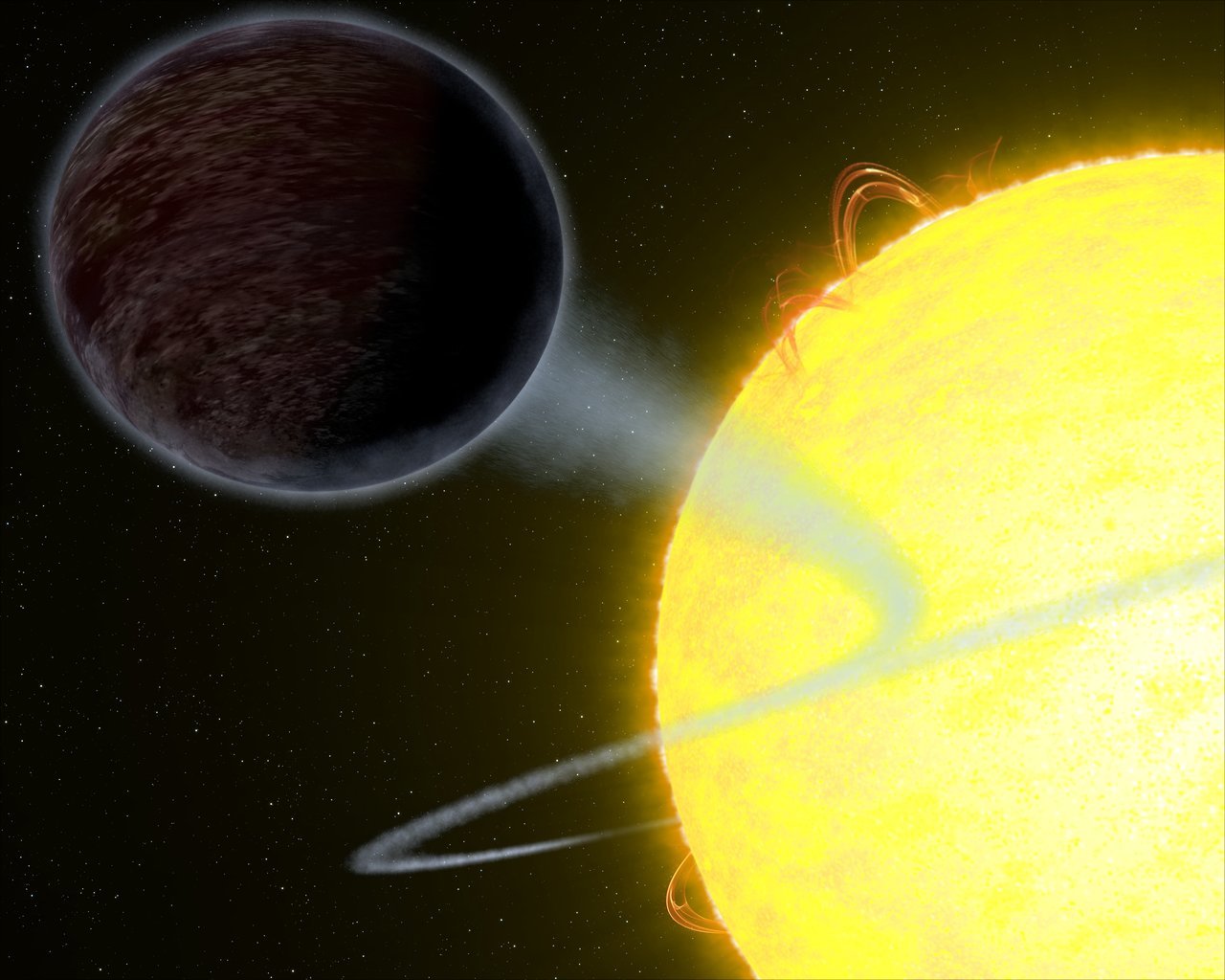NASA's Hubble captures blistering pitch-black planet
 |
| This illustration shows one of the darkest known exoplanets — an alien world as black as fresh asphalt — orbiting a star like our Sun. Credit: NASA/ESA/G. Bacon (STScI) |
The oddball exoplanet, called WASP-12b, is one of a class of so-called "hot Jupiters," gigantic, gaseous planets that orbit very close to their host star and are heated to extreme temperatures. The planet's atmosphere is so hot that most molecules are unable to survive on the blistering day side of the planet, where the temperature is 4,600 degrees Fahrenheit. Therefore, clouds probably cannot form to reflect light back into space. Instead, incoming light penetrates deep into the planet's atmosphere where it is absorbed by hydrogen atoms and converted to heat energy.

No comments:
Post a Comment
Comment here...